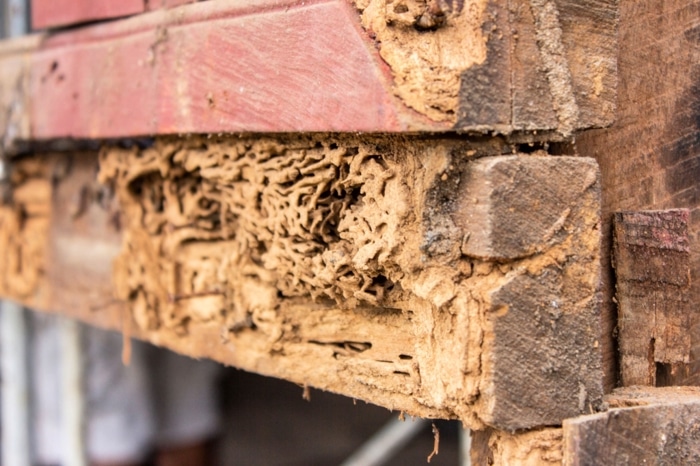If you’re managing apartments, you already know how often things break down at the worst possible time. Whether it’s a busted water heater, a jammed door lock, or a pest problem creeping in from the walls—stuff happens. Corrective maintenance isn’t glamorous, but it’s where the rubber meets the road in property management. Done right, it keeps residents happy, protects your property value, and saves you from bigger headaches down the line.
Corrective Maintenance Isn’t Just Fixing—It’s Managing the Unexpected
Let’s be real—most residents don’t report something until it’s already broken. You don’t get a heads-up that the AC is about to die or that a leaky pipe is slowly turning into a soaked ceiling. Corrective maintenance is your reaction plan. It’s how you handle those failures once they show up.
Now, this isn’t just about calling a handyman and crossing your fingers. Corrective maintenance is a system. It’s how you respond, who you involve, how fast you move, and how you track it all. Property managers who treat it like a fire drill every time? They burn out fast. But those who treat it like part of a well-oiled process? They win long-term.

Fast Fixes. Happy Residents.
The Impact of Delayed Maintenance Is Bigger Than You Think
Let me tell you a quick story. I managed a small set of apartments a few years ago. A resident reported a slow drain in the kitchen. Pretty routine, right? But we were backed up with a couple HVAC calls and pushed it to next week. Turns out, the “slow drain” was a grease clog that backed up into the unit below—two kitchen ceilings destroyed and three residents furious. What could’ve been a $75 plumbing fix turned into a few thousand in damage control.
This kind of thing happens when you let corrective maintenance fall down the priority list. The trick is treating “small problems” like they might turn into big ones. Because more often than not, they do.
Don’t Wait for a Breakdown to Get Organized
Most properties don’t struggle with the fixes—they struggle with the workflow. Who gets the call? Who follows up? Who decides if this is an in-house job or needs a contractor? And how do you make sure it doesn’t get lost in a pile of sticky notes and unread emails?
You need a system. A real one. Maintenance requests should flow through one channel—whether it’s a software platform or a shared inbox. And there should be clear steps: logging the request, assigning the job, following up, and closing it out. Nothing should depend on just one person remembering to do something. That’s where breakdowns (in systems, not just equipment) start.
Prioritize Based on Impact, Not Noise
One of the hardest parts of corrective maintenance is deciding what gets fixed first. And here’s the truth: the loudest request isn’t always the most urgent. A broken dishwasher might get more calls than a small leak under a sink, but guess which one leads to mold and structural damage?
You’ve got to develop a habit of triage. What affects health and safety? What causes more damage if left alone? What impacts multiple units? And what’s just an inconvenience? Once you start thinking like that, your response times become smarter—not just faster.
Communication Makes or Breaks Trust with Residents
Here’s where a lot of property managers slip—communication. Not fixing a problem fast enough is frustrating, sure. But not knowing what’s happening is what really gets under a resident’s skin. Silence makes people assume the worst: that you forgot, that you don’t care, or that it’s never getting fixed.
Even if the fix is delayed, a quick message saying “We’ve scheduled the repair for tomorrow at 10am” or “The contractor is picking up parts and will be there this afternoon” can go a long way. It turns a passive resident into someone who feels like they’re part of the loop. That’s how you build trust even when things go wrong.
Have a Backup Plan for Your Backup Plan
You’d be surprised how often Plan A fails. The plumber’s late. The part’s backordered. The in-house tech calls out sick. That’s why smart property managers always have a Plan B—and even a Plan C.
Build a network. Don’t rely on one vendor. Have a few go-to electricians, HVAC techs, and general handymen you can call. If you’re in a smaller town and options are thin, try to at least have a relationship with a company that can handle emergencies fast—even if it costs a bit more. Because when it’s 95 degrees and the AC goes out, you can’t afford to be stuck on hold.
Know When It’s Time to Replace, Not Repair
There’s a fine line between smart maintenance and wasting time and money on something that’s clearly on its last legs. If you’ve repaired the same unit’s water heater twice in the last year, you’re not saving money—you’re delaying the inevitable.
Track your repairs. Notice patterns. If a system or appliance keeps failing, it might be time to replace it altogether. Not only does this avoid constant emergency calls, but you also score points with residents who appreciate proactive upgrades.
Pest Problems Are Part of Corrective Maintenance Too
People often think pest control is a separate issue—but it’s deeply tied into your maintenance flow. Cockroaches behind a fridge? Rodents chewing through drywall? These are corrective issues that need fast attention, just like a leaking pipe or broken heater.
This is where Pest Share really helps property managers. When a resident reports pests, it becomes a repair issue—just one that bites or stings. Having a service like Pest Share on your side means you don’t have to scramble to find someone. You can get the right fix quickly, and more importantly, document it. That’s huge if there’s ever a complaint or inspection.
Document Everything Like Your Job Depends on It—Because It Does
Every request. Every repair. Every message sent to a resident. It all needs to be tracked. Not only does this help you stay organized, but it protects you legally and professionally. If someone comes back six months later and says “this was never fixed,” you want the receipts—literally and digitally.
Most maintenance software helps with this, but even a shared Google Sheet can do the job if you stay on top of it. What matters is consistency. If your system only works when things are calm, it won’t hold up during a busy season or emergency.
In the end, how you handle corrective maintenance says everything about how you manage your property. It shows whether you run a tight ship or just put out fires. It affects your residents’ experience, your property’s reputation, and your team’s stress levels.
No one’s asking you to predict every failure—but when something breaks, the way you respond matters more than you think. Build the system. Communicate clearly. Fix what needs fixing. Replace what’s worn out. And always keep one eye on what’s next.






